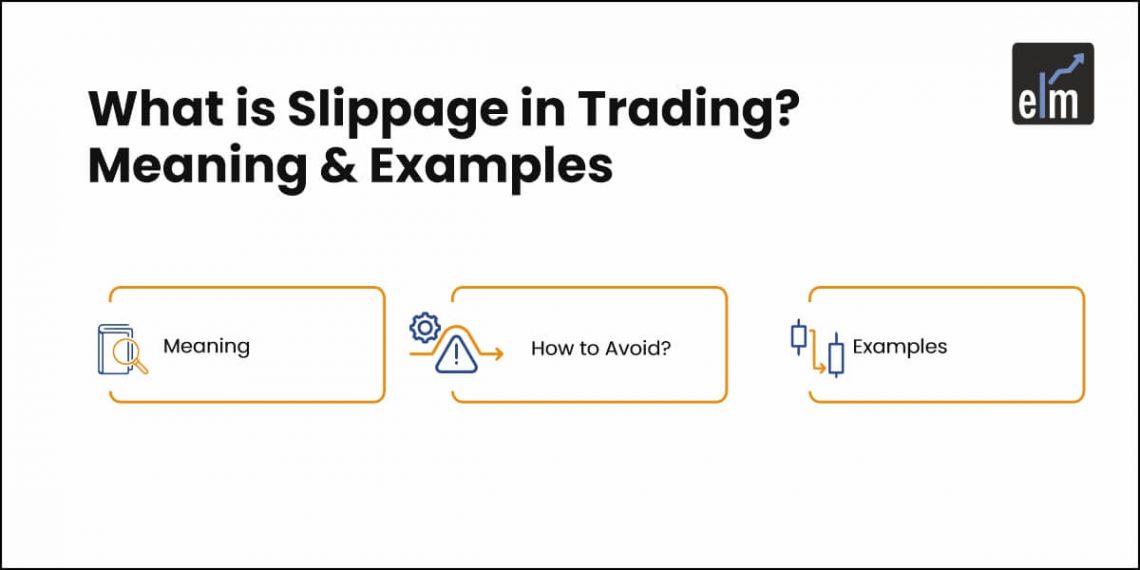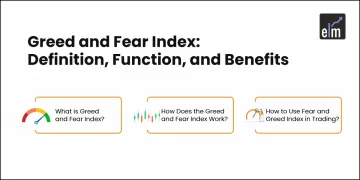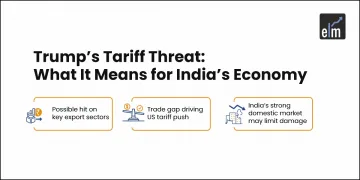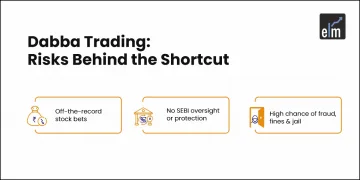Have you ever placed a trade expecting one price, only to see it execute at a different price? It might have been confusing, right? Simply put, slippage in trading refers to this difference. It may seem like a minor and often misunderstood part of trading, but it can have a significant impact on your overall trading results.
Slippage occurs most frequently when there is high market volatility or when there are insufficient buyers or sellers to carry out your order at the price you desire. Therefore, knowing why slippage occurs and how to minimize its impact can spare you unnecessary loss.
In this blog, we will eliminate the mystery surrounding what slippage is, why it happens, when to be wary of it, and how to address it in the right manner.
What is Slippage in Trading?
Slippage in trading refers to the situation where the price you expect to sell or buy an asset at is different from the price at which your order is executed. This is due to price movement in the short time it takes for the order to be executed.
Slippage can be positive (to the trader) or negative (to the trader), depending on whether the execution price is superior or inferior to expected.
For example, if Shyam places a buy order at Rs. ₹100, but it is executed at ₹99.50, the trader benefits from positive slippage. On the other hand, if he intends to buy at ₹100, but the order is executed at ₹100.50, the trader experiences negative slippage.
Key characteristics of slippage include the following:
- It occurs across all asset classes. Stocks, forex, commodities, and cryptocurrencies are all susceptible.
- It impacts various order types. Market orders are most vulnerable, while limit orders offer more control but may remain unfilled if conditions aren’t met.
- It is common during high volatility. Events like earnings reports or geopolitical news often trigger slippage.
Why Does Slippage Happen?
Slippage in trading happens due to several reasons, some of which are as discussed below:
- Market Volatility (Fast-Moving Markets):
Prices fluctuate within seconds. This is particularly so in cases of major news or market openings. If the market is live, your trade might be executed at a price other than anticipated.
For example, major announcements regarding a nation’s monetary policy or economic releases are able to make market sentiment go through drastic fluctuations.
- Few Buyers or Sellers (Low Liquidity):
In illiquid markets, there might not always be sufficient buyers who would be willing to buy at your price. This leads to higher bid-ask spreads, and thus your order might get executed at the next best available price, leading to slippage.
- Order Size:
Big positions can move the market price because they soak up the liquidity in the market. For instance, selling 1,000 shares of a low-liquidity stock may lead to big slippage.
Also, a market order will be executed at once at the best price that can be obtained. But the price may change prior to your order’s execution. A limit order, however, will execute only at a specific price or better, reducing negative slippage.
- Execution Delays:
In most cases, there is a lag in the execution of your order. It could be because of sluggish broker speed, internet delay, old trading software, or market conditions. This would make the price move before execution.
Even a few milliseconds of lag between the entry and execution of an order can cause slippage when prices move rapidly over the intervening period.
- High Trade Volumes:
There won’t be sufficient at any given price level for sale if you are buying or selling a large quantity of contracts or shares. Your order could be filled in small lots at different prices. Thus, creating slippage.
When to Watch Out for Slippage?
Slippage doesn’t happen all the time. However, there are certain situations where it’s more likely. Here’s when you should be extra cautious:
- During Big News Events:
Slippage in trading is common during major economic announcements. For example, when major financial reports, interest rate decisions, or unexpected global events hit the news, markets can move fast. This leads to a price change in seconds, leading to higher chances of slippage.
- Market Open and Close:
The beginning and end of trading sessions often see heightened activity. It can be chaotic as traders react to overnight developments or close positions for the day. Hence, prices fluctuate more, liquidity may be higher, and bid-ask spreads can be wider, making slippage more likely.
- Trading Low-Liquidity Assets:
Some stocks, forex pairs, or cryptocurrencies don’t have many buyers and sellers at a given time. This increases the likelihood of slippage due to limited market participants.
- Placing Large Orders:
If you’re buying or selling a large quantity, the market might not be able to fill your order at one price. Instead, it gets filled in parts. Sometimes, it fills in different prices, leading to slippage.
How Much Slippage Is Normal?
The degree of slippage varies depending on market conditions:
| Market Condition | Expected Slippage Range |
| High Liquidity & Low Volatility | 0.1–0.5% of trade value |
| Moderate Liquidity & Volatility | 1–2% of trade value |
| Low Liquidity & High Volatility | 3–5% or more |
You should also note that the acceptable amount of slippage varies depending on the market, as well as your trading strategy and risk tolerance.
In highly liquid markets like major forex pairs or large-cap stocks, slippage is typically minimal, often less than a few basis points. However, in volatile or less liquid markets, slippage can be more significant.
Let’s take an example.
There are major economic announcements like the RBI’s interest rate decisions or the Union Budget release. The stock prices and currency exchange rates can fluctuate rapidly.
In the Indian stock market, slippage can range from a few paise in highly liquid stocks like Reliance Industries to several rupees in mid-cap or low-volume stocks.
Similarly, in forex trading, slippage can occur when trading INR pairs during periods of high volatility. To manage this, you should analyse past market trends and stay updated on current events to set realistic expectations for slippage in their trades.
How to Avoid Slippage in Trading?
You can’t completely avoid slippage. However, you can take steps to minimise its impact on your trades. Here’s how:
- Use Limit Orders Instead of Market Orders:
Market orders are executed at the best available price. This may not always be what you expect. Limit orders allow you to specify the exact price at which you want your trade executed.
Unlike market orders, limit orders prevent unfavourable execution prices. But they may remain unfilled if market conditions don’t match your limit.
- Trade During High Liquidity Hours:
Slippage in trading is more common when there aren’t enough buyers and sellers in the market. Executing trades during peak market hours ensures narrower bid-ask spreads and reduces slippage risks.
Trading during peak hours (like when major stock exchanges overlap) can help you get better execution prices.
- Avoid High Volatility Periods:
Avoid trading during major news releases or geopolitical events unless volatility aligns with your strategy (e.g., scalping). If you’re not prepared for extreme price swings, it’s best to stay on the sidelines during these periods.
- Choose Reliable Brokers with Fast Execution:
Select brokers with fast execution speeds and transparent policies regarding slippage adjustments. Some brokers offer guaranteed stop-loss orders that protect against excessive slippage.
- Optimise Modern Technology:
Ensure your trading platform and internet connection are up-to-date. A reliable broker with low latency (minimal delay) can help reduce slippage and improve trade accuracy.
Also Read: Top 9 Types of Trading Order
Slippage Example
Consider the following example:
Ram places a market order to buy 1,000 shares of a company at an expected price of ₹50 per share. However, by the time the order reaches the market, the price has moved to ₹50.10.
The trader experiences negative slippage of ₹0.10 per share, resulting in an additional cost of ₹100 for the entire order.
| Details | Value |
| Expected Price per Share | ₹50.00 |
| Actual Execution Price | ₹50.10 |
| Slippage per Share | ₹0.10 |
| Total Shares Purchased | 1,000 |
| Total Slippage Cost | ₹100 |
Conclusion
Slippage is a natural process of trading. All traders are bound to experience it somewhere or other. And even though trading slippage may occur in your favor sometimes, it can even result in concealed losses.
The trick is to know when and why it happens. This will allow you to take measures to minimize its impact. Use limit orders, trade when liquidity is high, and use sophisticated technology to your advantage. This will allow you to minimize slippage, improve trade execution, and generate more profits.
You can visit StockEdge to explore detailed market insights.






